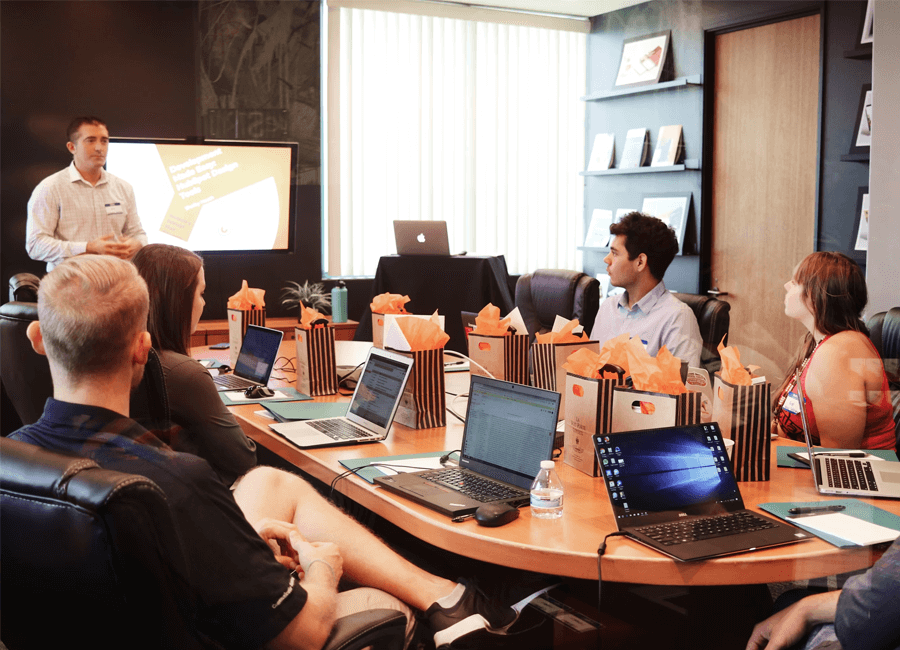‘Agile’ has been a popular buzzword for a long time now, not just in market research but in all industries, inspiring many discussions, articles, and working practices across the industry. Because of its propensity to inspire conversation and working practices in different areas of many industries, the term ‘agile’ has come to mean different things to different people.
For some that do not like the current change it’s exacting on their organisation, it’s a trend to watch that might eventually evolve to something else more useful for their industry. For those that love the change agile working brings about, it’s not just a working practice, but an attitude and a way of life.
In market research, the term agile has a few different meanings: amongst the most popular are ‘iterative’ and flexible’, ‘fast’ and ‘cheap’, and within those meanings, agile working has embedded itself into many areas and projects within the industry. This was the topic of FlexMR’s latest roundtable, hosted by Maria Twigge, Research Director at FlexMR, and attended by several insight experts from a range of different industries:
- Alex Frew, Head of Member Insight at Legal & General (Head of Insight)
- Jo Caley, Senior Insight Manager at Paragon (Insight Manager)
- Kira Newton, Head of CX Strategy, Customer Research and Insight at British Gas
- Rose Hadden, Insight Lead at UK Health Security Agency
- Gill Hayes, Head of Insight at UK Health Security Agency
- Kat Oliver, Product Manager at Lightsource Labs
- Charisma Agyemang, Sales Development Representative at FlexMR
- Vincent Bass, Sales Development Representative at FlexMR
- Paul Hudson, Chief Executive Officer at FlexMR
Thank you to everyone who attended this roundtable – all of you had wonderful experiences with agile research and working practices, and your experiences led to some great discussions on the topic. Because of everyone’s different experiences, we have accumulated some great advice, some unexpected practical challenges, and smattering of new ideas for everyone to try in order to make agile work for their research participants, insight team, and stakeholders.
| Tweet This | |
| Because of its propensity to inspire conversation and working practices in different areas of many industries, the term ‘agile’ has come to mean different things to different people. |
What Does Agile Mean?
Maria started off this roundtable event by asking everyone what does agile mean in their organisation? And do our attendees use it every day in market research experiences or within the stakeholder organisation?
Our attendees agreed that agile is a commonly referred to term, a lot of businesses want to become agile if they aren’t already, with some making a concerted effort to become agile through stakeholder education and an organisation-wide effort. A couple of our insight experts mentioned seeing agile approaches used more rigorously in specific teams rather than organisation-wide, with different teams at different stages of integrating agile approaches into their working practices, but all with the same goal of helping get objectives delivered and developing an agile mindset. It was observed that this mindset make teams more fluid.
The terminology used in agile methodologies, and indeed the agile methodologies themselves, originated from the technology industry, a fact which was noted in this discussion with the use of the terms “digital”, “scrum” and “sprint”. But the question emerged, do we use those terms because the businesses we operate in are digital-focussed, or because those terms and practices are making a move outside of the technology and development teams into the wider organisation?
Most of our attendees agreed that they believe it started in digital space and then moved out and is now influencing all other teams, but it’s not only the language that has been influenced, but the behaviour, attitudes and common working practices too. Agile approaches are commonly being used to help structure new ways of thinking.
A few of our attendees commented on the attitudes and new ways people within their organisation interact with each other, with one attendee in particular noting that it’s interesting being at the beginning of a business’s journey into agile working when it’s a new thing – we don’t realise how long it takes to build that culture when joining an organisation that has agile methodologies embedded into its infrastructure. That attendee shared that they have observed an importance placed on collaboration and prioritisation as they are two key drivers of agile in business.
Agile has always around in organisations as a working practice within technology development teams, and through their history we can see the potential for organisations to use agile working to change programmes and enhance proposition development, catching both big and small decisions at the same time. In market research it allows in-house insight teams to conduct some smaller research tasks in-house for speed and easiness as well as briefing the larger research projects out to agencies.
But more often in market research and insights, the increased use of agile working practices has highlighted an important question: how do we get customer voice heard in agile and time efficient way to influence decisions and actions?
Some of the answers to this question can be summaries as trying to anticipate what stakeholders and customers might need – be proactive in our research efforts rather than reactive to requests and trends. Yes, agile means we need to do things quickly and efficiently, but we also need to cover variety of different topic areas.
Now with all the talk of change and positive ramifications of becoming an agile organisation, one attendee recognised that there are negatives for insight teams, especially smaller insight teams: every project has regular in-depth stand-up meetings, and small teams can’t cope with workload when they have most of their daily hours filled up with stand ups.
The response to this was that it depends on how agile has been implemented, and success comes down to how the stakeholder organisation can cope with the drastic change that agile working brings. Agile is about collaboration and continuous iteration rather than having to have a concept or product completely finished before putting into research testing. When waiting for it to be completely finished it tends to be too far down the line to alter much even with the insights after testing, so the communities and panels become powerful tools for iterative evolution and learning as you go, and after embracing co-creation agile approaches the end product is much more polished and usable.
Agile approaches in market research are developed to deal with ill-defined situations where you don’t know where a project or going to go, and lends itself more to multi-phased and responsive projects. But another negative that arose when talking about agile in market research was that insight teams can become a victim of their own success, do we always want to be seen as the team who turns things around quickly? Or should we be seen as more tactical who sees bigger picture and works to find the best methodology to use for a research project rather than always resorting to agile?
| Tweet This | |
| There's a crucial question all insight experts wrestle with in market research: how do we get customer voice heard in agile and time efficient way to influence decisions and actions? |
Barriers to Agile Work
When asked how agile our attendees organisations are, and if agile was something they have a demand for, we got a few different answers that all fell under the umbrella of “it depends”. As in, it depends on the team they’re working with, as well as individuals, and the overall understanding of agile within their organisation.
For agile to work to its fullest capacity, everyone needs to work on the same understanding of agile, but there are a few different definitions at play and each one will work well for different organisations. In our attendees’ organisations, they are contending with a few challenges and recognise more challenges that might be on the way.
Firstly, the concept of “always-on” has been associated with agile, and as a result, their stakeholders sometimes come to them and ask if they can just pop a quick poll up or conduct a speedy survey to get fast insights, and sometimes the answer is no. There is a misunderstanding of what agile is capable of, and an education needed to make stakeholders understand that there might be better ways to conduct that research to make sure they’re getting the right insights. Our attendees recognised a need for dialogue with stakeholders to make sure they’re getting right input and guidance to generate relevant data and insights.
Another challenge to agile is adopting it as a methodology rather than an agile approach in terms of being flexible and quick. Businesses don’t recognise that agile as a methodology doesn’t deal with the planning and road-mapping and prioritisation that they’re used to in more traditional business practices; agile prioritises only what’s needed for next sprint in next three months or so. It doesn’t help generalised prioritisation process. Through this part of the discussion, it was realised that insight teams still need a request process in place, and getting that balance between agile working and traditional research practices is needed to ensure that stakeholders are getting the insights they need.
Two of our insight experts noted that siloes can spring up and damage agile working processes within an organisation. This can manifest in a sprint for proposition development where the stakeholders haven’t thought about the end-to-end process, or post-sales service, etc. They saw that this goes back to needing more educated stakeholders (in agile and market research), but at the very least having a set of principles or guidelines that insight experts can refer to and determine if right project. Insight teams can share these guidelines more broadly with stakeholders so they know too, which can work to start that education process and provide boundaries for agile and efficient research to work effectively.
Agile can be used in a few different ways in market research, for example, for idea development, improvements and testing, etc. But our insight experts saw that agile can be inaccessible for the inexperienced. Without some understanding of how it evolved into a transferrable approach or how it can work to improve working practices, it’s hard to understand how it should be implemented, which parts need to be done by which party, which stakeholders should be involved, etc. We are adapting aspects of agile into the research field and trying to grapple how businesses do research, but during this we also need to work out how to integrate agile approaches too and it’ll be different for every business.
Adding to this, how our insight experts engage with stakeholders has been transformed by agile approaches too; they have found that they are able to communicate smaller chunks of information to stakeholders quicker with agile methods, but stakeholders are used to getting a final polished answer from research, and these smaller bitty answers can be a confusing change. But this then sparked a question within the group discussion: Have any of our attendees ever used a sprint-type research review with a business as a way of inviting stakeholders into the research experience?
One attendee said that they have “to a degree”. There have been instances where they used forum discussions and quick polls around a specific interest area, and sharing the insights from these have helped drive a more structured brief and research experience off back of it. However, they mentioned that it’s not widely happening, it’s not formulated process just yet.
Another attendee chimed in with more of the same, saying that specific engagement topics that have then made them think about bigger future briefs, or a current brief being researched elsewhere on their research community, to which they could add more value by designing a new ad-hoc piece and supplementing the original brief with those new insights.
There’s an opportunity provided by agile approaches for listening and being inspired by talk from participants themselves within research projects or from discussions in informal research spaces such as community forums. Then using that as inspiration for a brief.
A few attendees mentioned that that was what they’re hoping to get to in the long-run. They want to see participant groups starting own conversations, and sometimes they do, but participants are typically trying to get advice for something and those more confident participants will chime in with answers.
A couple of our insight experts recognised that these aspirations for self-generating insight spaces will happen over time in more established, long-term communities. There will be pockets of consumer audiences will common interests, and started talking about stuff that becomes early trends. With B2B audiences this tends to come out more with live discussions where stakeholders are there to provide answers to questions in the moment. B2B audiences will find value by sharing it with other people, but we can encourage them to share more when they know they’re being listened to.
ActivateMR and Agile Collaboration
In the next section of the roundtable discussion, FlexMR’s CEO Paul Hudson introduced FlexMR’s brand-new insight activation tool, ActivateMR to the attendees. This tool was designed to support more iterative and agile ways of working with client stakeholders, help to report insights back to the business by bringing together different forms of research, charts, videos, etc. as well as different projects.
Collaboration is key with agile working, and this tool has collaboration built in, with the ability to discuss with stakeholders what findings mean to help drive action, all from dynamic dashboards and live conversations. Our attendees noted that tools like this have a variety of use cases, such as pulling together live data for a sprint review to bounce ideas off of and inform further research, go back into a knowledge bank of data and see if newly proposed research has already been done before and what insights were gathered from that experience (“like a Research Pinterest”), and distribute insights to stakeholders virtually to prompt discussion and insights activation workshop-style.
| Tweet This | |
| Are stakeholders ready for agile insight communication and activation? Do their working practices support this or is there any way insight experts can help prepare them for this change? |
This led onto a very poignant question, even with tools out there for researchers to help distribute insights in a more agile way, are stakeholders ready for this level of agile communication? How do we prepare them to get into this more agile mindset when it comes to market research?
Our attendees noted that there are many people in their organisation involved in agile-based change, but not all teams are merged into that or even able to be a part of the conversation. They can join regular meetings but now all are able to be in those important discussions for any future iterations. The level of agile able to be achieved varies depending on teams we’re working with and the individuals within that team, which links back to earlier discussions on how well people cope with this level of change. Research communities are widely seen across our experts’ organisations as something that provides an opportunity for agile research, which is in part due to how it was pitched, but the reality is not everyone is following how the sprint approach and insight is feeding into current projects across the organisation.
Within each team there are also nuances to how they use agile - there are some teams living and breathing agile, while others are still on their journey towards it. This led to some new crucial questions: can we trust that they’ll figure it out? What are their overall objectives, who needs involved in order to make agile happen both within research and within stakeholder teams? Who can we get on board with agile working enough to collaborate on agile research? Who is best placed to just advocate for agile research at end? While the tendency is to get all stakeholders involved, this more often than now slows down the project and injects irrelevant steps.
These questions never really got an answer, and that is mostly because each organisation will require their own unique answers based on how they adapt agile working practices. Every individual and organisation will go through their own unique journey and have different requirements for them to be able to fully adopt agile approaches and talking with our experts has shed some light onto great experience-based advice others can take on board on their journey into agile and efficient market research.


















